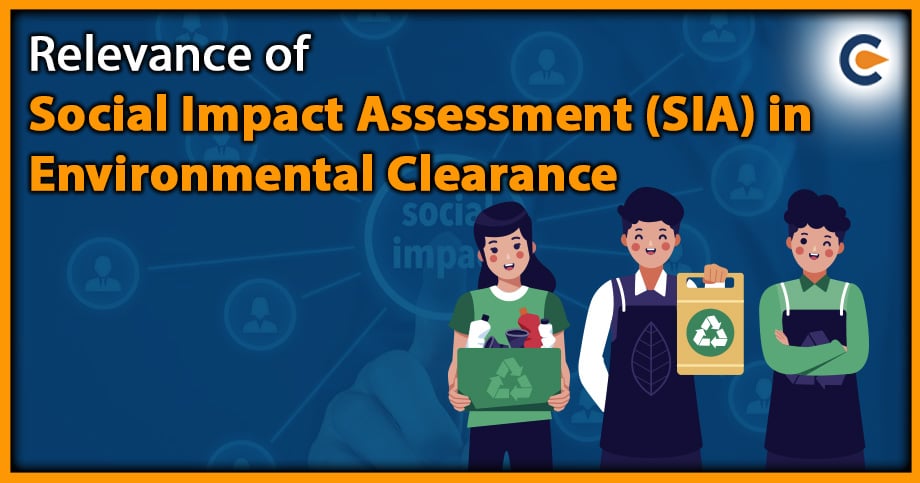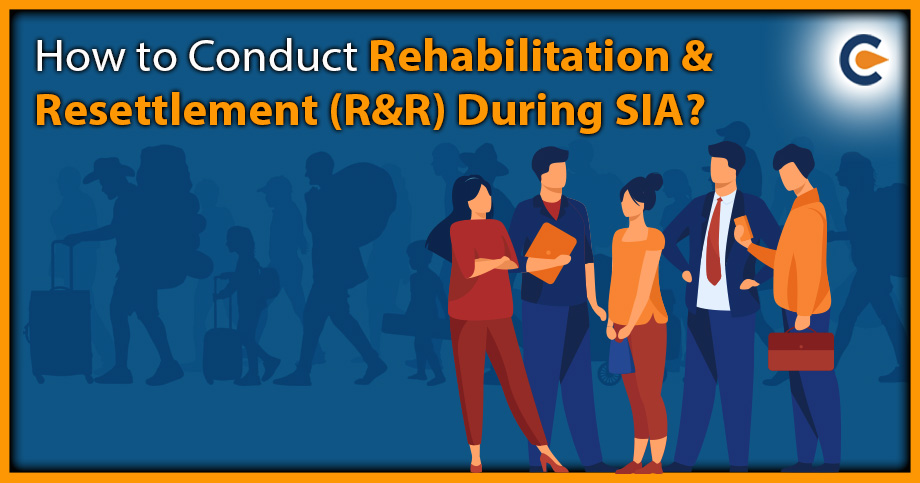Compliance with environmental protection laws requires an ESIA. The Environmental and Social Impact Assessment (ESIA) has two primary goals: minimising or avoiding adverse environmental and social effects and integrating environmental and social concerns into decision-making processes. The effectiveness of an ESIA is evaluated based on its ability to achieve these goals. Typically, the information needed for an ESIA relates to project components such as community engagement and acceptance, technical design, construction, and operation. The ESIA study consists of scoping, natural environmental study, pollution control study, social, environmental study, impacts identification and assessment, preparation of mitigation plans, and an Environmental and Social Management Plan (ESMP) along with an Environmental and Social Monitoring Plan (ESMoP), and conducting of their public consultation meetings and information disclosure processes.
Categorisation of Projects for Environmental and Social Impact Assessment
To categorise the environmental impacts of a project, three categories are used.
- Category A projects are those that are likely to have significant environmental impacts that are diverse, sensitive, or unprecedented and that may extend beyond the immediate area of the project.
- Category B projects have potentially adverse environmental impacts that are less severe than Category A projects, are site-specific and reversible, and can be addressed by mitigation measures.
- Category C projects are expected to have minimal or no adverse environmental impacts. In such cases, no further action is needed. Examples of Category C projects include education (not including school construction), family planning, and others.
Terms of Reference (ToR) for Environmental and Social Impact Assessment
ToR is a document that outlines the expectations for a practitioner or consultant when conducting an EIA. While ToRs can be simple or complex, it is generally advised that they be concise. There is no one-size-fits-all format for ToRs, but some general guidelines must be followed.
- The ToR should begin with a brief overview of the project and the area that will be affected.
- The study should focus on major issues and significant potential impacts identified during the scoping process while highlighting opportunities for positive benefits. This section is usually submitted to the designated authority for approval.
- The ToR should specify relevant safeguard policies and legal requirements.
- The necessary team for the study should be identified, including a team leader, but the team composition should be flexible.
- The expected start date and duration of the study and the budget limit should be included in the ToR.
- Reporting requirements should comply with local or international guidelines, and the EIS format and number of copies should be specified.
- The ToR should allow for improving the terms of reference to enhance the quality of the Social Impact Assessment.
Considerations in the Baseline Study
| Physical | Surface water and sediments, groundwater, air quality, noise, soils and land use |
| Biological | Biodiversity |
| Socio-economic | Socio-economic (social), cultural heritage, traffic and transport |
Documents Required During Environmental and Social Impact Assessment
- A comprehensive project description, including its name, location, proposed area distribution, water requirements, waste generation, etc.
- A plan of the site or layout.
- Evidence of the installation of equipment.
- Proof of land ownership.
- Identification proof of the signatory.
- Quality test reports, where applicable.
- Evidence of the mitigation measures adopted.
- Evidence of electricity and water connections.
Steps Involved In Environmental and Social Impact Assessment
- Screening – The EIA process begins with project screening to determine if an assessment is necessary and at what level of detail. The guidelines for determining the need for an EIA may vary depending on the country-specific laws or norms in place. Development banks may also conduct screening to determine if an EIA is necessary based on their own criteria for financing projects.
- Scoping – Scoping is utilised to identify the critical issues of concern early in the planning. The scoping outcome determines the extent, depth, and terms of reference to be addressed within the Environmental Statement. Scoping is carried out to achieve the following goals:
- Recognise problems and issues for consideration during EIA
- Guarantee that EIA is appropriate
- Allow those in charge of EIA research to provide the study team with a clear understanding of the alternatives and the impacts to be examined at various analysis levels.
- Determine the evaluation methods to be employed
- Recognise all the parties involved
- Provide an opportunity for public engagement in determining the factors to be assessed and help in the early resolution of contentious issues.
- Save time and resources
- Define the terms of reference (TOR) for the EIA study
- Significance of the Impact – This refers to the magnitude or extent of the impact. After predicting an effect, its significance must be assessed using appropriate criteria. The main criteria used for evaluation are:
- Specific legal requirements: this includes national laws, standards, international agreements and conventions, and relevant policy.
- Public opinion and complaints
- Potential harm to sensitive ecosystems and resources such as the risk of species extinction or resource depletion, which could lead to conflicts.
- The geographical range of impact, including transboundary effects.
- Cost of mitigation measures
- Duration or length of time the impact will last
- Probability or likelihood of occurrence, such as whether the impact is very likely or unlikely
- Possibility of natural recovery or recovery with human intervention
- Number of people likely to be affected, and their locations
- Cumulative impacts, such as when additional impacts are added to existing ones
- Uncertainty in impact prediction due to lack of accurate data or complex systems. The precautionary principle is often recommended in this situation.
- Mitigation – Mitigation aims to prevent, reduce or compensate for anticipated adverse effects and, when necessary, integrate them into an environmental management strategy. It is crucial to document and estimate the cost of mitigating potential negative impacts at each project stage to aid in selecting the most favourable option.
The main goals of mitigation are to:- Identify improved alternatives and approaches,
- Enhance the ecological and social advantages of a project,
- Prevent, decrease or resolve negative impacts, and
- Ensure that any remaining adverse effects are maintained within acceptable levels.
- Developing Environment Management Plan (EMP) – A Comprehensive Environmental Management Plan (EMP) should comprise a collection of strategies aimed at mitigating, supervising, and governing the operations and execution of the proposed project. The aim is to eliminate, counterbalance, or reduce undesirable environmental outcomes to acceptable levels. The EMP should also outline the actions necessary to carry out these measures, including the following components:
- The EMP should incorporate technical details outlining each mitigation measure based on the environmental impacts outlined in the EIA.
- The EMP should establish monitoring objectives that specify the type of monitoring activities that will be associated with the mitigation measures.
- Monitoring Programme –
- Baseline Monitoring involves surveying the primary environmental factors near the proposed project site before construction commences. The results of this survey will be used as a reference point to assess any changes in these factors over time that may occur as a result of the project.
- Impact Monitoring requires measuring the project area’s biophysical and socio-economic parameters, including public health, during the construction and operational phases. This is done to identify any environmental changes that may have arisen due to the project’s implementation, such as air pollution, dust, noise, water contamination, etc.
- Compliance Monitoring involves periodic sampling or continuous recording of specific environmental quality indicators or pollution levels to ensure that the project adheres to recommended environmental protection standards.
- Environment Impact Assessment (EIA)– The content of an EIA should include the following-
- Executive Summary
- Policy, Legal and Administrative Framework
- Description of the environment
- Description of the Proposed Project in detail
- Significant Environmental Impacts
- Socio-economic analysis of Project Impacts
- Identification and Analysis of Alternatives
- Mitigation Action/Mitigation Management Plan
- Environmental Management Plan
- Monitoring Program
- Knowledge gaps
- Public Involvement
- List of References
- Reference documents
- photographs
- Terms of Reference
- Consulting team composition
- Notes of Public Consultation sessions
Conclusion
Environmental and Social Impact Assessment (ESIA) is a crucial process that must be conducted before implementing any development project. It involves identifying, predicting, and evaluating potential environmental, social, and health impacts of the project and identifying mitigation measures to prevent or minimise these impacts. Through ESIA, the project’s impact on the environment, the community, and the economy can be assessed and addressed, resulting in sustainable development that is both environmentally sound and socially responsible. The Social Impact Assessment process involves different types of monitoring, including baseline, impact, and compliance monitoring, which are all essential for ensuring that the project adheres to environmental protection standards and that any environmental changes are addressed appropriately.
Also Read:
How To Proceed For EIA For The Integrated Paint Industry











